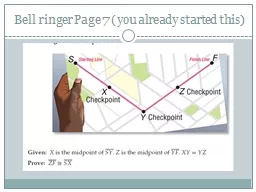PPT-Bell Ringer What problems arose as a result of industrialization in the first half of
Author : cheryl-pisano | Published Date : 2018-02-26
th century Becoming Better Americans Religious Social and Moral Reform Religious Revival and Reform Fixing Our Faith Religious Rebels Church attendance still common
Presentation Embed Code
Download Presentation
Download Presentation The PPT/PDF document "Bell Ringer What problems arose as a res..." is the property of its rightful owner. Permission is granted to download and print the materials on this website for personal, non-commercial use only, and to display it on your personal computer provided you do not modify the materials and that you retain all copyright notices contained in the materials. By downloading content from our website, you accept the terms of this agreement.
Bell Ringer What problems arose as a result of industrialization in the first half of: Transcript
Download Rules Of Document
"Bell Ringer What problems arose as a result of industrialization in the first half of"The content belongs to its owner. You may download and print it for personal use, without modification, and keep all copyright notices. By downloading, you agree to these terms.
Related Documents














